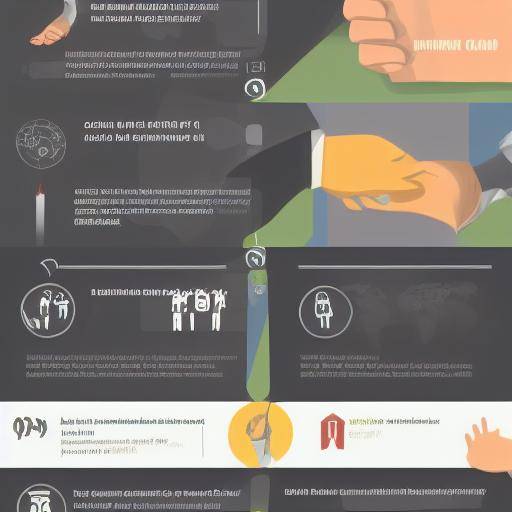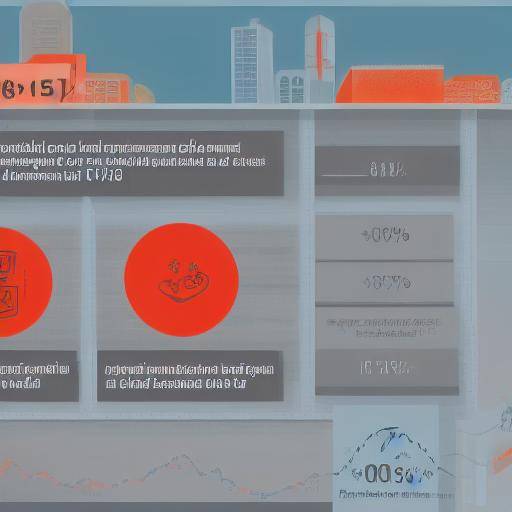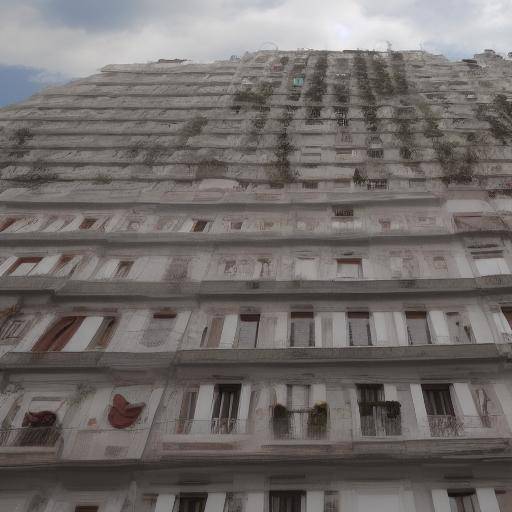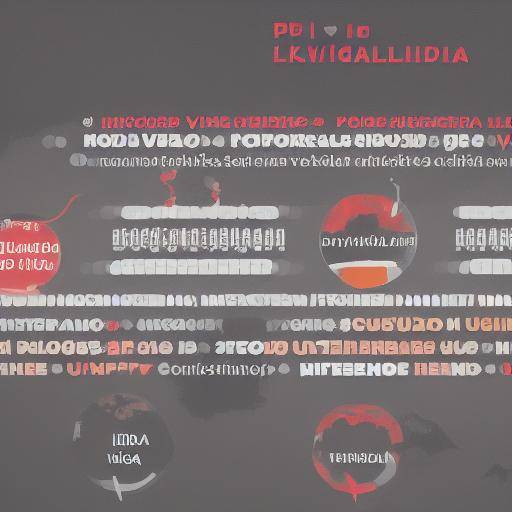
Introduction
The choice of home insurance is crucial for the protection of our heritage. But how does the location of our house affect this decision? In this article, we will explore the impact the location has on the risk assessment and coverage of home insurance. We will learn how factors such as geographical location, environment and crime rate influence insurance policies and what we can do to get proper coverage. From assessing the potential risk to understanding how the location affects insurance premiums, this article will provide valuable information to make informed decisions when choosing home insurance.
Risk assessment
The first consideration in choosing a home insurance is risk assessment. This evaluation is based on multiple factors, and the location is one of the most important. Insurers consider several aspects to determine the risk associated with a particular location, such as the crime rate, exposure to natural disasters and the quality of local infrastructure.
The crime rate in a given area can significantly influence risk assessment. Places with high rates of theft or vandalism are considered to be of greater risk, which may result in higher premiums or limitations in coverage. Similarly, areas prone to natural disasters, such as hurricanes, earthquakes or floods, are also considered high-risk, which can impact the conditions and costs of insurance.
Coverage and risk
The location not only affects the risk assessment, but also the coverage that insurers can offer. For example, living in areas prone to natural disasters may limit coverage for such events or require additional insurance policies. Also, in areas with high crime rates, insurers may impose restrictions on coverage of theft or intentional damage.
It is essential to understand how the location can impact the coverage to ensure that we are protected against the specific risks of our environment. In some cases, it may be necessary to obtain additional coverage or modify existing ones to adapt to the particularities of our location.
History and Background
To fully understand the impact of the location on risk assessment and home insurance coverage, it is important to explore the background and evolution of this process. Throughout history, risk assessment has been closely linked to geographic and environmental factors.
Since the first insurance systems, insurers have assessed the risk based on the location of the insured properties. At the beginning, the risks were related to natural phenomena, such as fires or floods, which could be influenced by the geographical location of the houses. Over time, risk assessment has evolved to cover a wider range of factors, including demographic, socio-economic and criminal aspects.
Analysis in Deep
To fully understand the impact of the location on risk assessment and home insurance coverage, in-depth analysis is crucial that addresses both the benefits and the challenges of this approach.
The benefits of considering location in risk assessment are evident. It allows insurers to adjust their coverage and pricing strategies to reflect the specific risks of each area, which in turn benefits insured persons by providing more accurate and appropriate coverage. However, this can also result in challenges, especially for those residing in high-risk areas, as they could face higher premiums or limitations on coverage.
Examiner carefully
When carefully reviewing the location in risk assessment and home insurance coverage, the importance of considering changes in the environment and the potential impact on risks is also evident. For example, urban development, infrastructure changes and crime patterns can have a significant impact on risk assessment over time. Therefore, insurers and insured persons must be aware of trends and changes in the local environment to ensure accurate assessment and adequate coverage.
Compare and contrast
It is essential to compare and contrast the risk assessment and coverage of home insurance in different locations. Differences in terms of potential risks and coverage can be significant between urban and rural areas, regions with different exposures to natural disasters or areas with different crime rates. By understanding these disparities, consumers can make informed decisions by choosing a home insurance that suits the particularities of their location.
Practical Tips
When choosing a home insurance, it is essential to take into account the location and its implications for risk assessment and coverage. Some practical tips include:
- Investigate the environment: Before acquiring a insurance policy, it is advisable to investigate the local environment, including the crime rate, the history of natural disasters and any other relevant factors that may affect the risk assessment.
- Consultation with experts: Requesting advice to insurance agents or domestic insurance experts can provide valuable information on specific location considerations in risk assessment and coverage.
- Consider additional coverage: Depending on the location, additional coverage may be needed for specific risks, such as earthquakes, floods or vandalism.
- Regular update: Since environment conditions and risks can change over time, it is important to periodically review insurance coverage to ensure that it remains adequate.
Industry Reflections and Expert Reviews
In order to get a wider view of the impact of the location on the choice of home insurance, it is essential to collect industry reflections and expert opinions. Insurance professionals can provide valuable information on risk assessment and coverage in relation to geographical location.
Case Studies and Practical Applications
Case studies that illustrate how geographical location influences risk assessment and household insurance coverage in real contexts provide a practical and concrete approach to these concepts. Analyzing real cases allows us to better understand the complexities and challenges associated with location in the context of home insurance.
Future Trends and Predictions
Finally, it is crucial to review future trends related to risk assessment and household insurance coverage. Given the constant change in social, economic and environmental environments, it is essential to anticipate possible developments in risk assessment and coverage and how these could be related to geographical location.
Conclusion
In conclusion, location plays a key role in risk assessment and coverage of home insurance. From the influence of the crime rate and exposure to natural disasters to the adaptation of coverage to the particularities of a specific environment, the location has a significant impact on the choice and terms of home insurance. Understanding how the location affects risk assessment and coverage allows us to make informed decisions and ensure proper protection for our homes.
Frequently asked questions
How does the crime rate affect my location to risk assessment and home insurance coverage?
The crime rate at a given location can influence risk assessment, which in turn impacts on household insurance coverage. Places with high crime rates are often considered at higher risk, which may result in higher premiums or limitations in coverage for certain events, such as theft or vandalism.
How can I know if my location is exposed to natural disasters and how this affects risk assessment and home insurance coverage?
You can consult natural risk maps provided by government agencies or insurance companies to determine whether their location is exposed to natural disasters such as hurricanes, earthquakes, floods, etc. Exposure to these risks may influence risk assessment and household insurance coverage, as insurers can adjust their conditions and prices accordingly.
Why is it important to consider the specific features of my location by choosing a home insurance?
The specific characteristics of the location, such as exposure to environmental risks or crime rate, can have a significant impact on the risk assessment and coverage of home insurance. Ignoring these factors could result in insufficient coverage or unexpectedly high premiums. It is therefore crucial to consider these aspects when selecting a home insurance.
Is there any differences in risk assessment and household insurance coverage between urban and rural areas?
Yes, there are significant differences in risk assessment and household insurance coverage between urban and rural areas. Urban areas often face risks related to crime and population density, while rural areas may be more exposed to natural disasters. These disparities can influence the conditions and prices of home insurance.
How can I know if I need additional coverage due to the location of my home?
To determine if you need additional coverage, it is advisable to consult with an insurance agent or home insurance expert. They can evaluate the particularities of their location, including exposure to specific risks, and recommend the coverage needed to ensure adequate protection for their housing.
How can I keep up-to-date the coverage of my home insurance considering the changes in my local environment?
It is essential to periodically review the coverage of your home insurance to ensure that it remains adequate. Changes in the local environment, such as urban development, new threats or crime patterns, may affect the risks associated with their location. Keeping up with these changes allows you to adjust your coverage as needed.
In short, the location plays a crucial role in risk assessment and household insurance coverage. Understanding how the location affects these aspects allows owners to make informed decisions by choosing a home insurance that adapts to the particularities of their environment. When carefully considering location and implications, adequate protection for the home and its property can be ensured.






















































